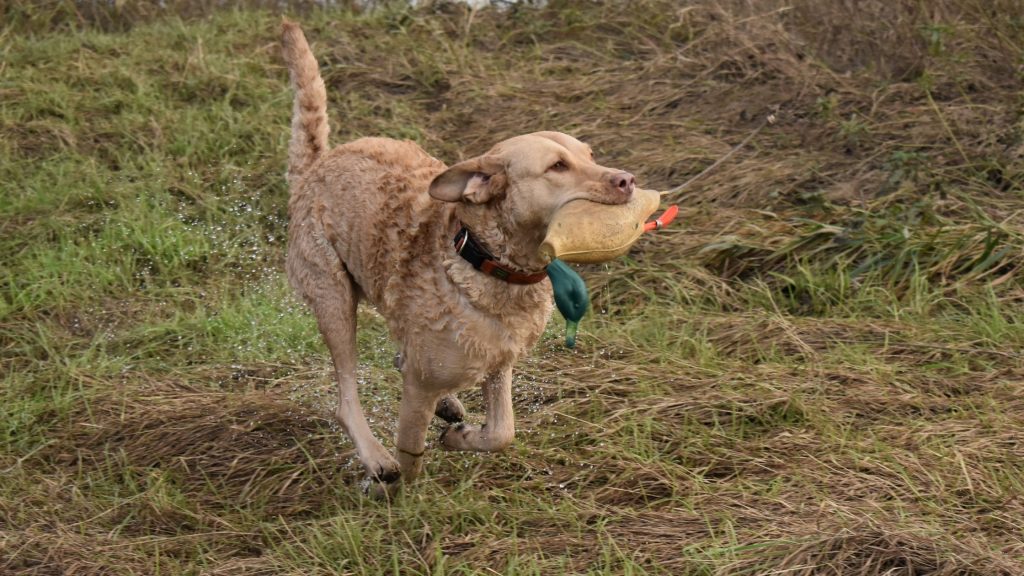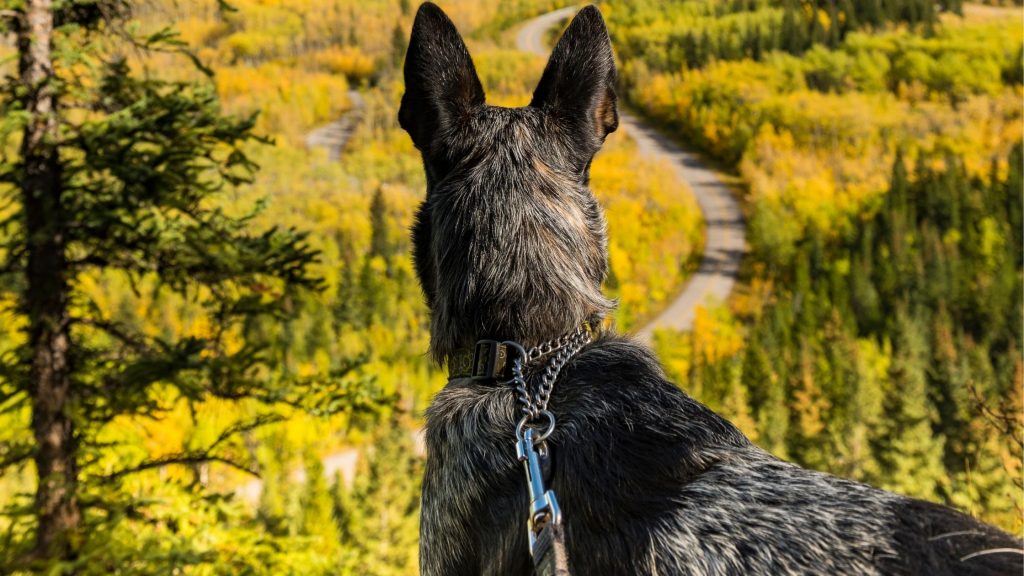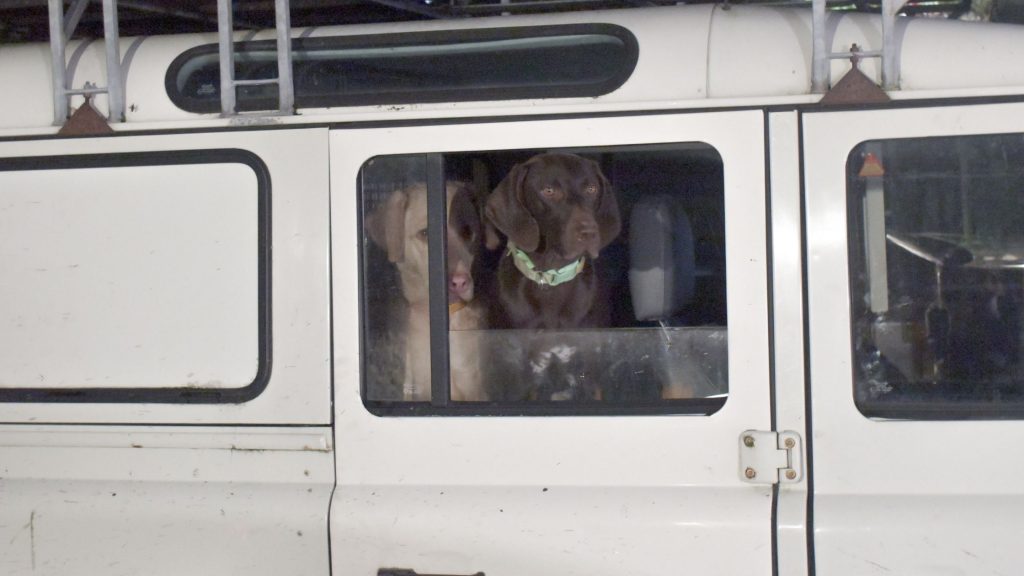Overlanding is a fantastic opportunity to see many things and experience life in different parts of the world, and who better to accompany you on your adventure than your four-legged companion?
Bringing your dog along on a trip will make the journey more enjoyable for both you and your pet.
Having that in mind, you need to remember that bringing your puppy along would necessitate some changes to your packing list and rethinking of your vehicle’s organization.
If you’re thinking about taking your dog on an adventure, here are some helpful hints and necessities to check before you go.
Judge your dog
The first step in the preparation process is actually very easy. You have a greater understanding of your dog more than anyone else.
Is your dog the sort who loves going on adventures? Is he stressed when he’s in a car or a strange environment? Check to see if your dog has the ability or attitude to go off-roading.
No one, not even animals, needs to be compelled to do something they don’t want to do. Some breeds, on the other hand, are made for adventure!
Pack and prepare for Overlanding with dog
Making a list of things your pet would most likely need will take up just as much time as making your own. You should only bring the things you need in order to save space in your vehicle.
Depending on the size of your pet, you’ll need to make sure there’s enough room for them to lie down comfortably during your journey. If your pet is wedged between your cooler and storage bins, they will probably not be too happy.
With this in mind, you will need to exclude any non-essentials from your own list if space is a concern.
Food and water supply
If you plan on going for a long trip, you have to figure out where you’ll get your dog’s food while you’re on the drive. Think about how you’ll store fresh versus canned or bagged food.
Shorter trips should not pose as many problems. You can bring enough food for the whole journey. Make sure you count correctly how much food your pup is eating. It’s always better to bring more than you need, just in case!
A dog needs at least one ounce of water per pound of body weight per day, much like humans. The amount of water your dog drinks any given day is influenced by a number of factors, including the temperature of the atmosphere and the amount of exercise he gets.
Our dogs love to roam around for hours, and they usually try to find rainwater puddles or streams to drink from. But if that’s not possible, we are always prepared with bottled water.
Water is the single element that prevents people from spending long periods off the grid. Make sure you have plenty, so your dog won’t dehydrate. Don’t forget to carry your dog’s water dish.
Beds and toys

You can bring tennis balls and toys along to keep your dog occupied, just in case you don’t plan on taking a long walk. For our dogs, we always bring bumpers. They both enjoy fetching from water or field.
Don’t forget to pack comfort items for your dog. Those could be a favorite bed or cot and a blanket. During your travels, you want your doggy to be as comfortable in the car or lying outside as possible.
Travel crate
If you have enough space in your rig, you may want to consider having a crate for your dog to travel in.
It’s not mandatory in most countries. It’s mostly for safety reasons during driving, but also, some dogs prefer to have their own space.
Collar and leash
- Collar with tags
It’s essential to have a set of tags with your name and phone number on them. It would help if you also considered chipping your dog in case of an emergency.
- Leash
Where possible, we let our dogs off the leash. But when there are other humans or animals around, we will hold them on a leash to not annoy anyone.
It would be wise to have a leash with you at all times. If you are not sure of your dog’s reaction to the environment, it’s better to have him on to control his actions properly.
- Harness
You may want to consider getting a harness instead of a collar for your dog if you plan on going for long hikes and keep your pooch on the leash the whole time. It will definitely be more comfortable for the dog.
Flea/tick/mosquito treatment
Us Overlanders always find ourselves in the middle of nowhere. Some thick bush, wet marshes, or dense forests. They are crawling with insects. Some are harmless for you and your dogs, but others, like ticks and mosquitoes, can cause some trouble like Lyme disease or heartworm.
It’s best to bring enough tick and flea treatment for your dogs to last the whole journey unless you plan on visiting a vet/pharmacy along the way to pick up some more.
Pet first aid
This is without a doubt one of the most crucial things to bring with you. You can get a decent simple pet first aid kit for a reasonable price, or you can make your own.
Pet first aid differs from how we treat humans, so it’s best before you go to look up how to aid your dog in case of emergency. You can ask your local vet. AKC recommends a pocket guide that helps you recognize illness, assess the injury, and learn about food toxic for your dog amongst first aid information.
I suggest carrying Benadryl for infants. When your dog gets himself into something, this can be a lifesaver. Look up the dose for your animal based on its weight.
If you need to get medications into your pet as soon as possible, wet snacks come in handy.
Another thing to consider is to have a decent pair of tweezers on hand to remove ticks, thorns, and splinters, among other things.
For the time when your dog consumes something you deem dangerous for him or something you are not sure about, it’s best to carry 3% hydrogen peroxide to induce vomit.
With Peroxide, you have to be very careful. Over 3% is toxic to dogs, so it’s best to consult your vet about it.
At the pet shop, look for a pet-friendly version of antibiotic ointment for scratches and small wounds.
Other things you should consider packing in your DIY doggy first aid kit are:
- gauze
- adhesive tape/vet wrap
- cotton balls
- digital thermometer
- scissors
- oral syringes
Air condition
Who doesn’t like hot weather to get some tan or to have a swim in the ocean?
Sometimes you find yourself traveling to hot destinations, like deserts or beaches in the middle of the summer.
Ensure your dog gets enough shade to keep cool, but if you are traveling for quite a while in a hot climate, the best is to have a working AC. You can keep your dog from overheating, which could cause serious health problems.
If your dog is one of those “big fluffy bears” or doesn’t stand hot conditions well, you could consider getting a cooling jacket or a mat. All you need to do is wet them to cool your pup down.
Going Toilet
Remember to pack with you doggy bags. Even when you are out there in the woods or mountains, it’s still better not to leave your dog’s poo lying around.
Alternative from carrying around a bag full of dog excrement on a long hike, you can dig a little hole in the ground and bury it, so there is no trace left on the ground.
Basic training and leash

Before you go on an adventure, make sure your dog is properly trained and understands basic commands, like sit, stay and come.
When going overlanding, you’re bound to run into lots of wildlife; it’s important that your dog doesn’t chase them as it is dangerous to both the wildlife and your dog.
If your dog is not the best at recall, it’s still OK to bring them with you. Make sure you have your pup on the lead in the forest where it can’t run after anything.
Some places, like National Parks, require your dog to be on a leash at all times regardless. A dog off the leash can eat anything on the ground, including poisonous plants, become a target for other dogs or wild animals or chase wildlife.
Where would the dog sleep
Dog in the ground tent
If you are planning on traveling with a ground tent as your bedroom, it’s best to get your pooch trained to sleep in it with you.
There is no problem getting in and sleeping in a tent for some dogs, but there are few that will need to get used to sleeping inside this strange contraption.
Ensure your tent is big enough to house you, your dog, and all things you need. Try to envision how much space your dog takes on your bed and convert it to the space you would like to have while camping. There is no need for anybody to be squeezed in the corner the whole time.
Dog in the RTT
If you are traveling with a rooftop tent, there is not much difference for your dog between sleeping in RTT and ground tent, except climbing on the ladder, although you still need to make sure there is enough space for everyone inside.
If you have a little or medium-sized dog, you can just lift it up and down from the tent. With bigger dogs, you need more strength to do that, but it’s not impossible.
For DIY fans, there is a simple solution to get your dog into a roof top tent: a homemade ramp. You need few pieces of plywood long enough to make a slope and some anti-slip tape on it to help your puppy out. You could join the plywood with hinges to fold it in your car.
There are many variations, and only your imagination can stop you there.
Dog in the back of the car
One of our dogs can get really hot at night and can’t stay in bed with us the whole time. She’s a cold-weather dog and also prefers to have her personal space.
If your dog doesn’t want to sleep in the tent with you for whatever reason, you can make a bed for him in the back of the car, where he normally stays while driving.
Remember to leave the window down a little bit, so your dog can breathe fresh air and not suffocate at night. To prevent unwanted visits from mosquitoes and other insects at night, you can install a bug screen on the car door.
For rain protection, while the window is open at night, you could use an awning or rain deflector.
Plan for Overlanding with dog
When everything is already packed in your vehicle, and your puppy can’t wait to head out for adventure, there are still a few things you have to consider before you go.
Likewise, when you are on the road, having a good time, let’s not forget about the health and safety of your four-legged companion. There are a few things to take into consideration.
Vaccines and crossing borders
All dogs must have their rabies and other vaccinations up to date to cross the borders.
Bring some documents from your veterinarian attesting to your dog’s general well-being, as well as vaccine history.
A few vaccinations are recommended to keep your pet healthy. Core vaccines include those for canine parvovirus, distemper, canine hepatitis, and rabies. Those are mandatory for every dog regardless of traveling.
Based on the dog’s risk of exposure, you should look into non-core vaccines. Vaccines for Bordetella bronchiseptica and Leptospira bacteria are among them.
The only vaccine we’ve ever been asked for at the border is a current rabies shot, but to avoid being surprised, it’s best to check the conditions at each border crossing before you arrive. Don’t hesitate to ask your vet!
Where to go
Before you embark on your adventure and travel to your destination, double-check that dogs are permitted in the area.
Since pets “disrupt nature,” many National Parks have changed their pet policies. Call ahead to find out where your pets are permitted; some places only allow pets to stay in parking lots, which would be a huge disappointment if you had driven several hours only to discover this.
If dogs are permitted, please be aware that you are responsible for both your own and your dog’s conduct. Keep your dog on the leash or under voice control at all times.
Dogs are not permitted in most monuments and ruins. What would you do if your dog is not allowed? If boarding or pet sitting is a choice, consider it. Make sure you’ve thought about anything to make things as easy and fun as possible for you and your four-legged friend.
We prefer to stay away from the hustle and bustle of tourist places. For us, driving through backroads with our dogs running along is the way to go. We do a lot of hiking in the woods and mountains and swim in unnamed wild lakes.
But to each their own. Just plan ahead of time where you are going and prepare yourself and your dog for all possibilities. After all, overlanding is about having fun!
Closest vet
While you’re on the road, you’ll need to keep your dog safe. Depending on the duration of your journey, you will need to find a veterinarian in the region or country you’ll be visiting to provide regular treatment and checkups, prescribe medications, and administer booster vaccines. If you’re not in a rush, look for vets on the Internet.
If you find yourself in an emergency, it is essential to be as informed as possible before contacting a veterinarian. If you have service, the Internet will help you locate an emergency vet.
You may also inquire with locals. Make sure you know how to say veterinarian in the local language if you are abroad.
Leaving your dog in the car

There are few situations where you would go out of the car and leave your dog waiting inside, like going grocery shopping or getting fuel, for example.
If you travel with a very friendly dog, make sure they are left in a safe place. There are cases of people breaking into the car with a dog inside, stealing belongings, and leaving the dog in the vehicle with the door open.
In most cases, having a dog in the car is a good scare tactic for any potential break-ins.
Make sure that when you leave your dog in the car, they have access to fresh air; even when it’s raining, it’s always a good idea to crank their window down a little.
During hot weather, try and park in the shade so that the car won’t get hot inside and your dog won’t overheat.
If you travel together with another person, one of you could stay with the dog in the car while the other goes shopping. Alternatively, you could pre-order your groceries at the shop and pick them up on drive-through if there is an option.
Conclusion
Overlanding with your pet adds a whole new level of excitement to the experience. They’ll be excited to go on more trips with you, and they’ll be watching to see if you take the keys to your rig. You’ll never want to leave your furry buddies at home once you start taking them. Camping with your dog can be fun and soothing, and by being well-prepared, you can avoid a lot of tension and packing up earlier than planned.
- Tips and tricks For Setting Up Camp Like a Pro - September 11, 2023
- The Best Multi-Tools for Overlanding Adventures - August 25, 2023
- Off-Road Navigation Tips for Overlanders - August 13, 2023





